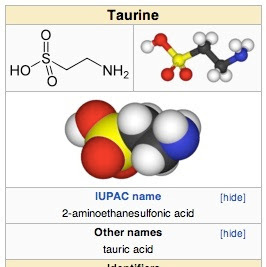Taurine (TAU), an organic compound that is widely distributed in
animal tissues, is a powerful antioxidant and regulator of intracellular
calcium. It has many fundamental biological roles, such as conjugation of bile
acids, antioxidation, osmoregulation, membrane stabilization, and modulation of
calcium signaling.
Gut permeability and microvascular injury following
ischaemia/reperfusion (IR) have been implicated in the systemic inflammatory
response syndrome (SIRS) and multiple organ failure (MOF). Several studies have
showed that treatment with TAU protects cerebral, cardiac and testicular tissue
from (IR) injury. In this study, the authors also investigated the protective
effect of taurine (TAU) in an experimental model of I/R-induced gut injury in
rats.
Sprague-Dawley rats were randomized into three groups:
Control, I/R, TAU + I/R. TAU was given by gavage or
intravenous injection before I/R. Ischaemia was induced by cross-clamping
superior mesenteric and coeliac vascular pedicle for 20 -30 min, followed
by 60 - 180 min reperfusion. Gut permeability, blood flux, tissue
oedema, leucocytes infiltration and eNOS expression were measured at 3 hrs
following reperfusion using FD4. Leukocyte-endothelial interactions were
determined by intra-vital microscopy during I/R. In vitro studies
assessed the protective effect of TAU on endothelial cell function and
survival.
The results indicated that treatment
with TAU significantly attenuated IR-induced gut hyper permeability,
tissue oedema, leukocyte adhesion and infiltration.
TAU also prevented the reduction in gut blood flow, leukocyte rolling
velocity and eNOS expression induced by IR. TAU protects against I/R-induced endothelial cell injury
by reduced anti-oxidant activity and modulation of eNOS expression and
intracellular calcium fluxes. Also, TAU protects the gut from
intestinal barrier dysfunction induced by surgical I/R.
In conclusion, taurine in clinically relevant doses effectively
inhibits intestinal hyperpermeability and tissue edema and maintains normal
microvascular function, following I/R of the coeliac and superior mesenteric
vascular pedicle in rodents. Taurine can protect the gut barrier function
during surgery and warrants further investigation as a peri-operative
intervention, which can help to maintain gut barrier integrity and improve
outcomes for patients undergoing surgery.
Article by Hong Chen, et al, from Beaumont
Hospital, Dublin, Ireland.
Full access: http://mrw.so/ApjKh
Image by dnappen, from Flickr-cc.

评论
发表评论